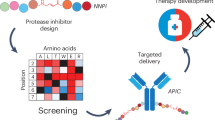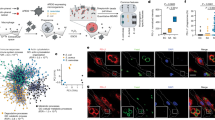Abstract
A NUMBER of leukocyte chemotactic factors of defined structure have been described. They include formyl-methionyl tripeptides (f-Met-Leu-Phe and related peptides) which attract neutrophils at concentrations as low as 1010—10−11 M (refs 1 and 2), the eosinophilotactic tetrapeptides Val-Gly-Sur-Glu and Ala-Gly-Ser-Glu (ECF-A) (ref. 3) and HETE; a 12-hydroxy-unsaturated fatty acid derivative of arachidonic acid4. All of these have in common a net negative charge and a hydrophobic moiety. The availability of chemotactically active molecules of known structure now allows structure–activity relationships to be examined, and preliminary evidence that f-Met peptides bind to a receptor on the leukocyte surface has been presented5,6. Leukocytes respond to a great many chemotactic factors of diverse structure and, in order to understand fully the binding sites involved, it will be useful to have as many defined chemotactic factors for study as possible. This paper reports the chemotactic activity of the succinylated form of the bee venom peptide, melittin.
This is a preview of subscription content, access via your institution
Access options
Subscribe to this journal
Receive 51 print issues and online access
$199.00 per year
only $3.90 per issue
Buy this article
- Purchase on Springer Link
- Instant access to full article PDF
Prices may be subject to local taxes which are calculated during checkout
Similar content being viewed by others
References
Schiffmann, E., Corcoran, B. A. & Wahl, S. A. Proc. natn. Acad. Sci. U.S.A. 72, 1059–1062 (1975).
Showell, H. J. et al. J. exp. Med. 143, 1154–1169 (1976).
Goetzl, E. J. & Austen, K. F. Proc. natn. Acad. Sci. U.S.A. 72, 4123–4127 (1975).
Turner, S. R., Tainer, J. A. & Lynn, W. S. Nature 257, 680–681 (1975).
Becker, E. L. in Molecular and Biological Aspects of the Acute Allergic Reaction (eds S. G. O. Johansson, K. Strandberg & B. Uvnäs) 353–370 (Plenum, New York, 1976).
Schiffmann, E. in Leukocyte Chemotaxis; Methodology, Physiology, Clinical Implications (eds J. I. Gallin & P. G. Quie) (Raven, New York, 1977).
Habermann, E. & Jentsch, J. Hoppe Seyler's Z. Physiol. Chem. 348, 37–50 (1967).
Weissmann, G., Hirschhorn, R. & Krakauer, K. Biochem. Pharmac. 18, 1771–1775 (1969).
Sessa, G., Freer, J. H., Colacicco, G. & Weissmann, G. J. biol. Chem. 224, 3575–3582 (1969).
Habermann, E. & Krowallek, H. Hoppe Seyler's Z. Physiol. Chem. 351, 884–890 (1970).
Zigmond, S. H. & Hirsch, J. G. J. exp. Med. 137, 387–410 (1973).
Wilkinson, P. C. Clin. exp. Immun. 25, 355–366 (1976).
Wilkinson, P. C. Chemotaxis and Inflammation (Churchill-Livingstone, Edinburgh, 1974).
Moore, S. & Stein, W. H. J. biol. Chem. 211, 907–913 (1954).
Author information
Authors and Affiliations
Rights and permissions
About this article
Cite this article
WILKINSON, P. Succinyl bee venom melittin is a leukocyte chemotactic factor. Nature 267, 713–714 (1977). https://doi.org/10.1038/267713a0
Received:
Accepted:
Published:
Issue Date:
DOI: https://doi.org/10.1038/267713a0
This article is cited by
Comments
By submitting a comment you agree to abide by our Terms and Community Guidelines. If you find something abusive or that does not comply with our terms or guidelines please flag it as inappropriate.



